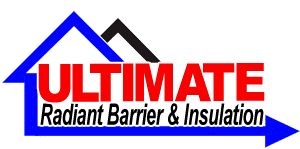Introduction to Attic Insulation
Ever felt the sweltering heat of a Houston summer? Or, conversely, the chill of its winter? These extremes can lead homeowners to wonder: “How can I ensure my home remains comfortable throughout the year?” The answer, quite often, lies just above you. In the attic.
Why is Attic Insulation Important?
Saving on energy bills
Did you know that up to 25% of a home’s heating and cooling costs can be attributed to heat loss through the attic? That’s right. By insulating your attic, you’re essentially locking in the comfort, preventing heat from escaping during winters and from entering during summers. The result? A dramatic decrease in your energy bills. Think of insulation as a cozy blanket wrapped around your home. Doesn’t that sound inviting?
Increasing home comfort
Beyond the financial aspect, there’s a tangible comfort that comes from well-insulated spaces. Imagine sitting in your living room during a chilly evening without needing to constantly adjust the thermostat. Or, enjoying a mid-summer afternoon indoors without the relentless hum of the AC. That’s the power of effective Attic Insulation Houston.
Types of Attic Insulation Available in Houston
Houston’s unique climate means that homeowners need insulation that can handle both the heat and the occasional cold snap. Here are the top contenders:
Fiberglass Insulation
Ever seen those pink rolls of insulation? That’s fiberglass. A classic choice, fiberglass insulation is lightweight, fire-resistant, and non-corrosive. Plus, it’s relatively easy to install, making it a favorite for many DIY enthusiasts.
Spray Foam Insulation
Spray foam expands upon application, ensuring that even the tiniest of gaps and cracks are sealed. This creates a strong thermal barrier. While it’s more expensive than fiberglass, its comprehensive coverage can lead to more significant energy savings in the long run.
Cellulose Insulation
Made primarily from recycled paper, cellulose insulation is treated for fire resistance. It’s an eco-friendly option that’s denser than fiberglass, providing an effective barrier against both heat and cold.
Factors to Consider when Choosing Insulation
Insulation R-Values
Understanding R-values
In the world of insulation, the term “R-value” is thrown around a lot. But what does it mean? Simply put, the R-value measures insulation’s resistance to heat flow. The higher the R-value, the better the insulation’s performance. When selecting insulation, Houston homeowners should aim for a higher R-value to combat the city’s extreme temperatures.
Climate Considerations
Given Houston’s humidity and heat, moisture resistance and higher R-values are crucial. Insulation that can’t handle moisture can lead to mold and other issues, so always consider the local climate when choosing your insulation.
The Installation Process
DIY vs. Professional Installation
While the thrill of a DIY project can be tempting, insulation installation is something best left to the pros. Professionals ensure that there are no gaps or overlaps, guaranteeing optimal performance. Plus, they can advise on the best insulation for your specific needs and home layout.
Conclusion
Insulating your attic isn’t just about combating Houston’s weather extremes. It’s about enhancing comfort, reducing energy consumption, and making your home a more pleasant place to be, year-round. Whether you lean towards fiberglass, spray foam, or cellulose, ensure you consider the local climate and R-values. And remember, while DIY has its merits, professional installation ensures that you get the most out of your insulation investment.
FAQs
- Why is attic insulation so crucial in Houston?
- Houston experiences both hot summers and chilly winters. Proper attic insulation ensures consistent indoor temperatures and reduced energy bills.
- What is the best type of insulation for Houston homes?
- There isn’t a one-size-fits-all answer. Factors like your budget, home size, and personal preferences play a role. Consulting with a professional can help narrow down the best option.
- How often should I replace my attic insulation?
- Generally, insulation lasts for decades. However, if you notice a spike in energy bills or decreased indoor comfort, it might be time for a check-up.
- Is insulation environmentally friendly?
- Many insulation types, like cellulose, are made from recycled materials. Moreover, by reducing energy consumption, insulation indirectly reduces carbon emissions.
- How much can I save on energy bills with proper insulation?
- While the exact figure varies, homeowners can expect to save up to 25% on heating and cooling costs with effective attic insulation.


